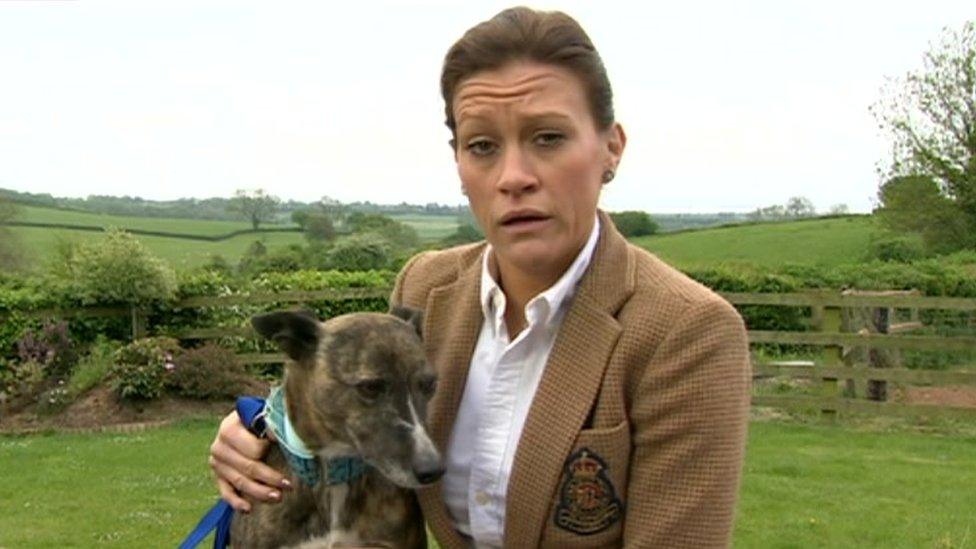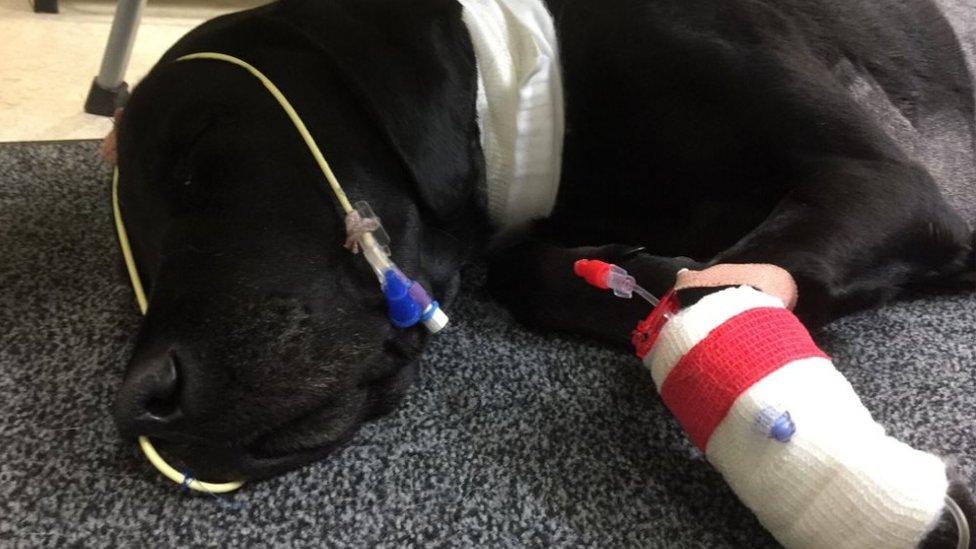Alabama Rot: Six Welsh cases of deadly dog disease in two months
- Published

A post-mortem examination showed German shorthaired pointer Sky had Alabama Rot
A rare but deadly canine disease has claimed its 13th victim in Wales, amid a spike in confirmed cases.
German shorthaired pointer Sky, 12, suffered kidney failure and had to be put down after contracting Alabama Rot.
Hers was the sixth such case in Wales in the past two months. The total number of deaths in the country is 13.
Sky's owner Mel Mackeprang has urged other dog owners to be aware of the symptoms which include skin sores and vomiting.
Ms Mackeprang, from Eglwys Brewis, Vale of Glamorgan, said she was heartbroken.
The cause of the disease remains unknown it is under investigation by the Royal Veterinary College., external
Some vets advise owners to wash their dog if it becomes muddy after a walk.

Since 2014 there have been six confirmed cases in Monmouthshire, four in Powys one in Wrexham, one Rhondda Cynon Taff and one in Vale of Glamorgan
"I came down in the morning and she'd been sick... I rushed her to the vets," said Ms Mackeprang, adding that Sky became unwell after going on her usual walk in their village the day before.
"They thought she had pancreatitis but blood results showed her kidneys were failing, then she had a seizure and they advised to get her put down.
"I've got two other dogs, they were walked in the same place at the same time in Eglwys Brewis. It's a walk I've done for 13 years."
Alabama Rot was first recognised in the UK in 2012 and the first case in Wales was confirmed in Buckhold Wood, Monmouthshire, in 2014.
Cases are confirmed by post-mortem skin and kidney analysis. They are logged on website Alabama Rot, external which is managed by David Walker, a vet and expert on the condition from Anderson Moores Veterinary Specialists in Hursley, Hampshire.
So far this year there have been three confirmed cases in Powys and one in Monmouthshire, one in Rhondda Cynon Taff and one in the Vale of Glamorgan.
In total, 142 cases have been confirmed in the UK since 2012, with 22 of those in 2018.
Mr Walker said: "It is understandably very worrying for dog owners, but we hope the increase in cases is partially due to a higher awareness and understanding of the disease.
"We also advise dog owners to remain calm but vigilant, and seek advice from a vet if their dog develops unexplained skin lesions."
- Published9 May 2017

- Published10 May 2017

- Published18 October 2017

- Published31 January 2018
